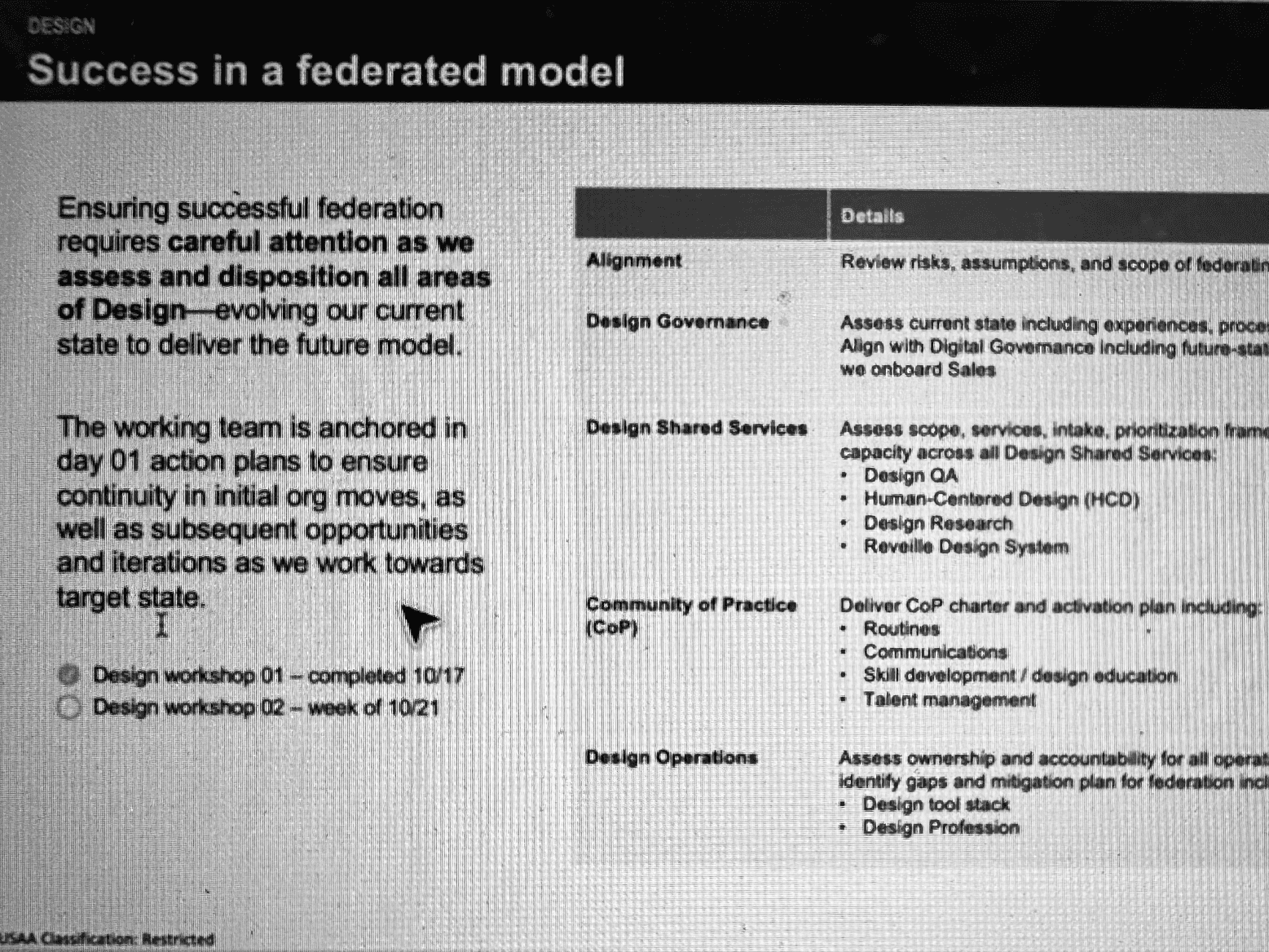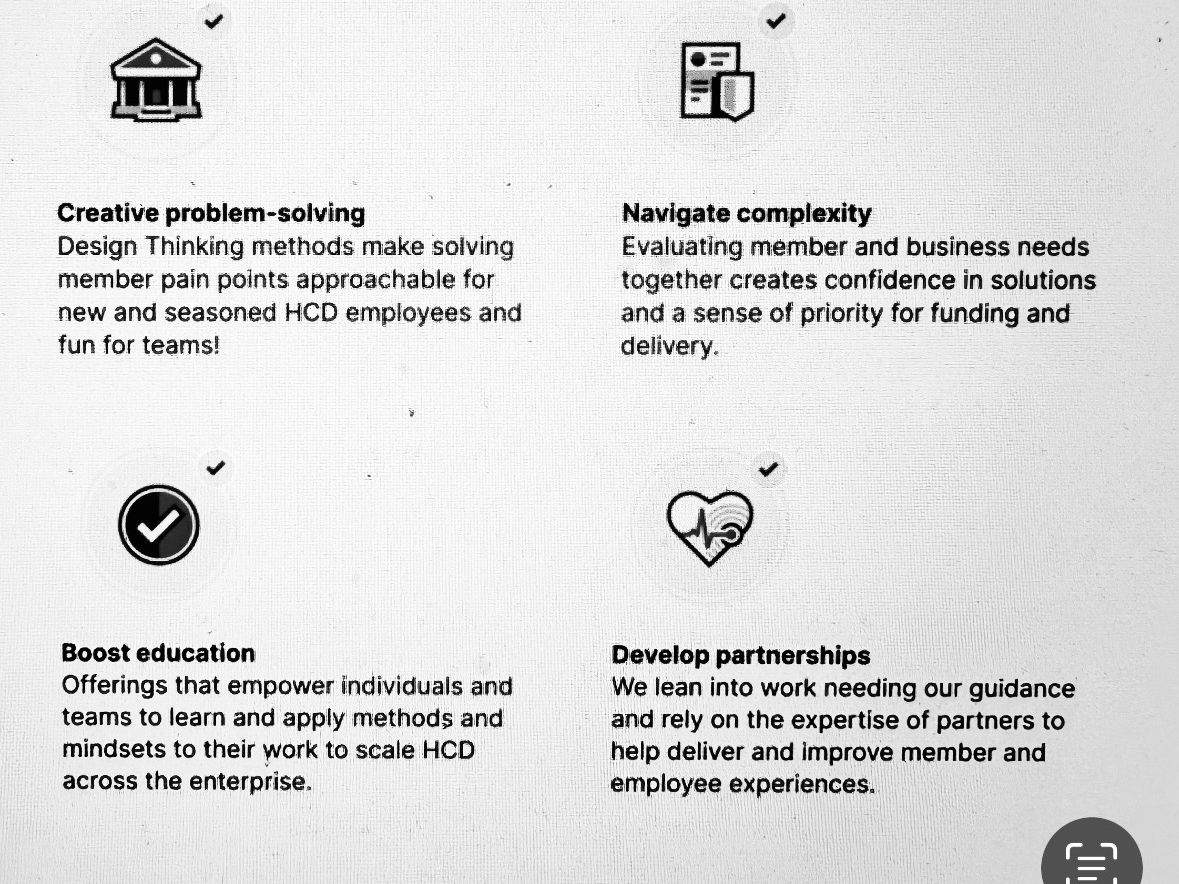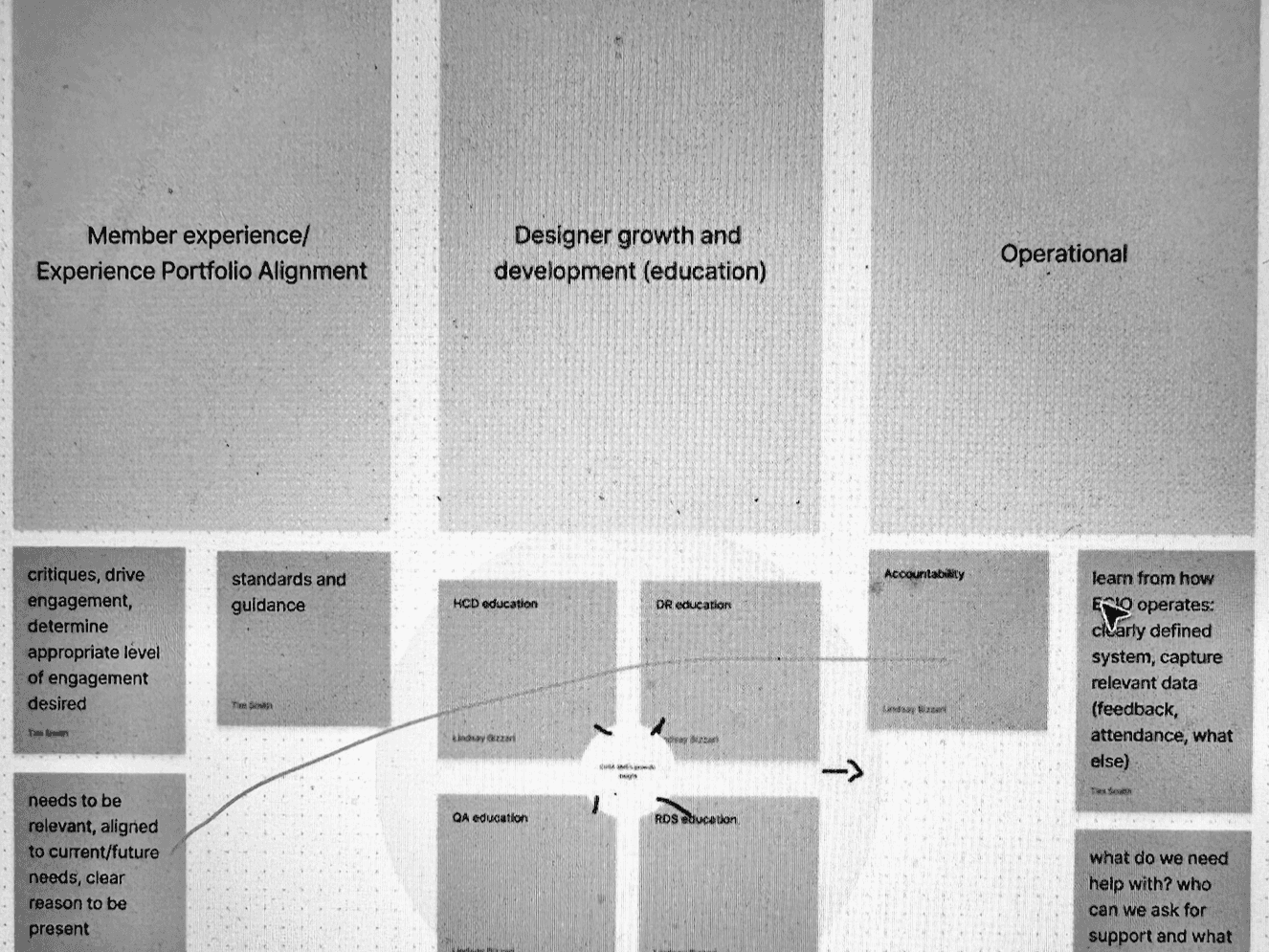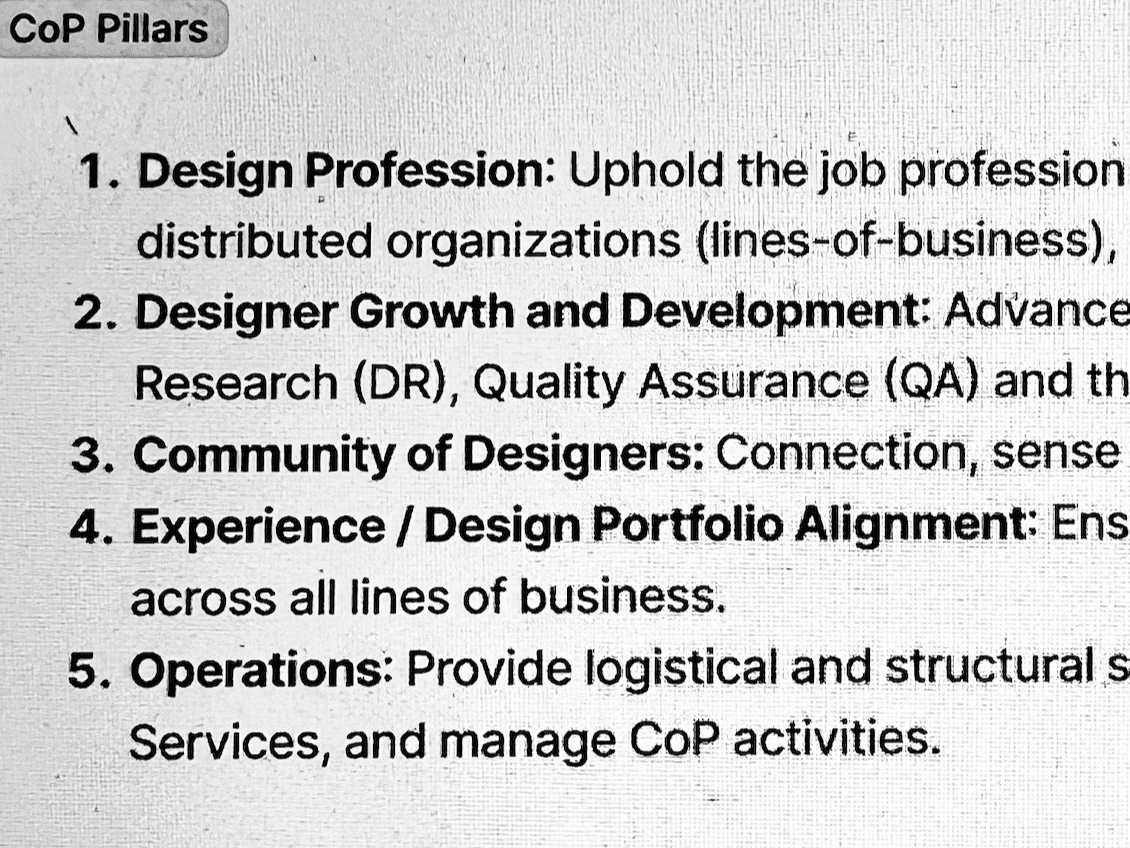Community of Practice | USAA
The Challenge: Building DesignOps In A Newly Decentralized model.
Following the dissolution of our DesignOps team, critical gaps emerged in operational support, consistency, and alignment across the enterprise.
In a highly matrixed environment, with design teams now spread across multiple lines of business—each with diverse goals and priorities—we sought to preserve momentum, foster collaboration, and create new ways to stay connected.
I was tasked with creating a new way of working together, ensuring designers stayed connected and supported across a highly matrixed enterprise.
Creative Process
Using a strategic blend of research, collaboration, and iterative design, rooted in human-centered and systems thinking, I began by deeply listening—gathering insights from designers across the enterprise to understand pain points, operational gaps, and shared aspirations.
Applying co-design principles and engaging stakeholders at all levels helped me to shape a model that balanced autonomy with alignment. The work was done iteratively, prototyping structures, refining governance, and testing engagement models to ensure the CoP would genuinely serve its members.
My process was both high-level and hands-on—seeing the big picture while also crafting the tools, frameworks, and rituals needed to sustain connection, enable knowledge-sharing, and provide ongoing support in a complex, decentralized environment.
Success in a federated model
Guiding principles
Prioritization
Pillars of Practice
Process Management
Approach
To address the complexity, I began by mapping out the needs of over 200 designers across different teams. I gathered insights through feedback sessions, prioritizing key focus areas like workflow standardization, resource sharing, and professional development.
Collaboration
I worked closely with team leads, researchers, and design managers across the enterprise to align on goals and ensure buy-in. We co-created shared principles to establish governance for the CoP. This approach allowed us to create a scalable framework that resonated with all stakeholders.
Outcome
Our Community of Practice now sustains the operational scaffolding of our design teams, adapting to a newly decentralized (hub-and-spoke) model. It serves as a landing pad for Shared Services, including Design Systems, QA, Design Research, and Design Practices/Education, fostering consistency, collaboration, and growth.
Impact
Within six months, we established bi-monthly touchpoints, standardized best practices, and launched a resource hub that will increased alignment across teams. Leadership praised the program for addressing critical gaps in Design Ops and enhancing team efficiency and cohesion.
Principles in Action
Stakeholder Feedback and Surveys
We began the process by gathering feedback and looking for themes and insights into truly understanding our Designer’s needs in this new model.
Persona Development
Creating Designer Personas (looking at needs, desires, behaviors) allowed us to make CoP decisions that fit different Designer segment needs.
Co-designing and Iterative Planning
Involving designers and leaders in shaping the CoP mirrors co-design principles often used in UX to ensure solutions are user-centric and practical.
Program Design as a UX Outcome
The CoP itself is a “designed experience” for designers. From workflows to educational resources, I applied UX thinking to create a program that serves as a tool for their success.



